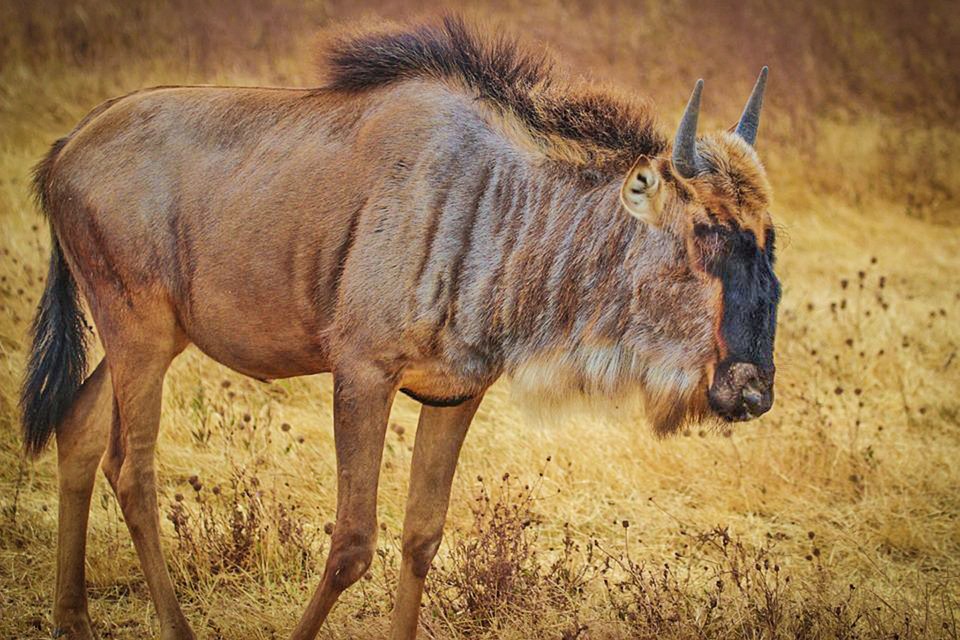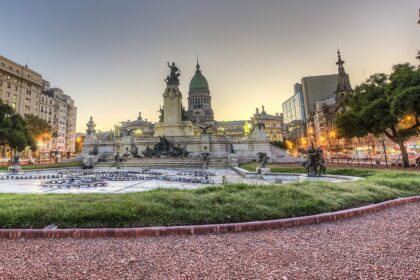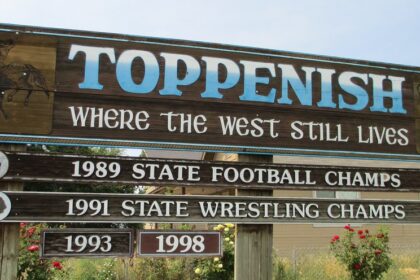Gnus, better known as wildebeests, come from the bovidae family, like goats and cattle. Around 1.5 million gnus live in different regions of the planet. They’re classified into two species, black wildebeest and blue wildebeest, each with distinct facets of living habits and behavior. Take a look below for 27 more interesting and fun facts about gnus.
1. Gnus got their name “wildebeest” from a Dutch term meaning wild beast of wild cattle. It’s named as such because of its hairy mane and horns.
2. Their appearance looks like a mixture of 3 different animals. It’s head looks like an ox, it’s mane looks like it came from a horse and it’s horns look like they’re taken from a buffalo. Most of the morphological changes have been seen in blue wildebeests as compared to slight changes in black wildebeests since ancient times.
3. Blue wildebeests have about 5 subspecies, while black wildebeests don’t have any subspecies.
4. Blue wildebeests are much bigger than black wildebeests.
5. Male gnus are known as “bulls,” while female gnus are called “cows.”
6. They have horns have grow upwards and then curve inwards. Their arrangement of horns varies a lot among blue wildebeests and black wildebeests. A male gnus horns can grow up to 32 inches.
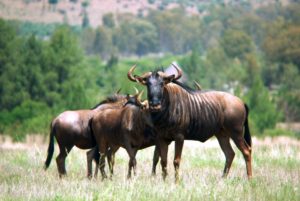
7. Gnus are herbivores, which means that they have a plant based diet. Their diet consists mainly of tree leaves, grass, ferns, fruits, and fungi.
8. They’re very noisy animals. They make loud moans or explosive snorts. When they suspect danger, they make groaning calls and flee as a group, creating a massive stampede.
9. Their mating season is called a “rut” and it takes place between April and July. The male gnus attract the female gnus by setting up a temporary territory during the mating season.
10. Gnu calves are born at the onset of monsoon, which generally lasts for two or three weeks in February and March. During one mating season, up to 500,000 calves are born. Blue wildebeest calves are born with a tawny brown color.
11. Calves suffer from high mortality rates. It’s only through their natural strength and having an experienced mother can the calf have any hope of surviving. Calves not born during peak mating season often have even less of a chance of survival.
12. Gnu calves follower their mothers right after birth. At most, they’ll take 3 to 7 minutes after birth to get oriented and begin walking on their own.
13. They’re weaned for about 6 months, though they start to feed on grass as early as 10 days into its life.
14. Every year, they migrate vast distances for better food supplies, better availability of drinking water, and accessibility to phosphorus rich grass.
15. As many as 1.5 million gnus travel hundreds of miles each year while being accompanied by zebras and gazelles. Their migration is important to the ecological system as their grazing and crushing stimulates growth in the grasslands.
16. Since 1950, the number of white bearded gnus has increased by about 500,000.
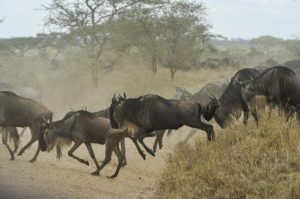
17. Male wildebeests are known as the “clowns of savanna” because of their strange behaviour during mating season.
18. Zebras and gnus groups together in the open savannah where there’s a high chance of predators being present. This strategy reduces the risk of predator attacks because the larger groups decrease each individual’s chance of being hunted.
19. The season presence of hundreds of thousands of migratory wildebeests reduces the local lion predation on giraffe calves, resulting in greater survival of giraffes.
20. Wildebeests can listen to alarm calls of other species, which also reduces their risk of predators catching them by surprise.
21. One study has shown that, along with other ungulates, wildebeests responded more strongly to the baboon alarm calls compared to the baboon contest calls, though both types of calls had similar patterns, amplitudes and durations.
22. Wildebeests are economically important for humans as they’re a major tourist attraction in Africa. They also provide important products like leather. However, they can also have negative impacts to humans, such as transmitting diseases like rinderpest to domestic cattle.
23. The black wildebeest is on the coat of arms of the Province of Natal in South Africa.
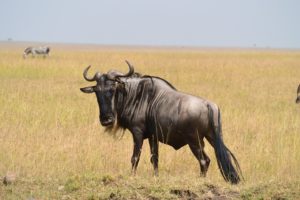
24. South African authorities have also issues several stamps that show the black wildebeest. The South African Mint has also made a two cent piece with a prancing black wildebeest.
25. Movies and television shows widely feature wildebeests. Some examples are, The Wild, Khumba, All Hail King Julien, The Great Space Coaster and the Lion King.
26. The wildebeest is the mascot of the GNU Project and the GNU operating system.
27. While the black and blue wildebeests have steady population numbers, the Eastern white-bearded wildebeest has seen a steep decline.

